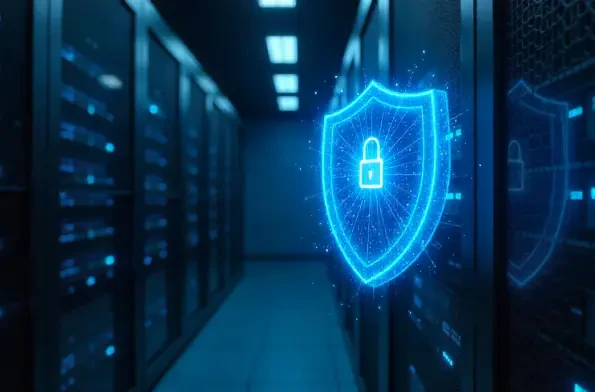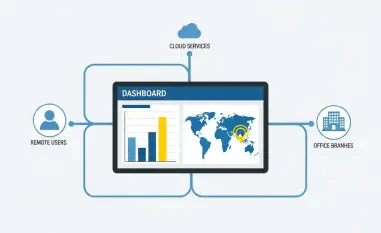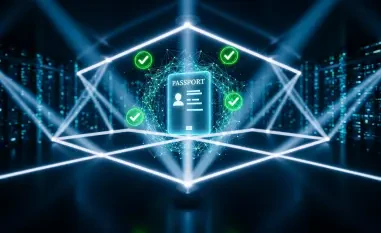Defining the Path to Enhanced Cybersecurity
This guide aims to equip organizations with the knowledge and actionable steps to bolster their cybersecurity framework by integrating Zero Trust principles with Identity Governance and Administration (IGA). By following the detailed instructions provided, readers will learn how to create a robust, identity-centric security architecture that mitigates risks, ensures compliance, and adapts to modern threats in dynamic IT environments. The purpose is to transform traditional security approaches into a proactive, governance-driven model that prioritizes continuous verification and strict access controls.
The importance of this guide lies in the escalating complexity of cyber threats that exploit identity as a primary attack vector. With enterprises increasingly adopting cloud and hybrid systems, perimeter-based defenses are no longer sufficient. This resource offers a strategic pathway to combine Zero Trust’s “never trust, always verify” philosophy with IGA’s structured access governance, providing a comprehensive solution to protect critical resources. It addresses both technical enforcement and organizational policy alignment, ensuring a balanced approach to security.
By delving into this guide, the focus shifts to practical implementation, overcoming integration challenges, and harnessing the synergies between these two frameworks. The step-by-step instructions will navigate through establishing governance, enhancing visibility, and enabling rapid threat response. Ultimately, this journey promises to build resilience against sophisticated attacks while maintaining operational efficiency and regulatory adherence.
Why Traditional Security Models Are Insufficient
Understanding the shortcomings of conventional security approaches is crucial before embarking on the integration of Zero Trust and IGA. Traditional perimeter-based models often assume trust once a user or device gains access to the network, leaving internal systems vulnerable to lateral movement by attackers. These outdated methods struggle to address the nuances of cloud environments where boundaries are fluid and access points are diverse.
The rise of identity as a central target for cyberattacks further exposes the gaps in older frameworks. Sophisticated threats, such as phishing and credential theft, exploit human error to bypass static defenses, making identity the new perimeter. Without continuous verification and strict governance, enterprises risk significant breaches that can compromise sensitive data and disrupt operations.
This shift in the threat landscape necessitates a fundamental change in security posture. Zero Trust challenges the notion of implicit trust by requiring ongoing authentication and authorization for every access attempt. When paired with IGA’s ability to define and manage access policies based on roles and business needs, a more resilient defense emerges, addressing the limitations of past models and aligning with today’s digital realities.
Step-by-Step Instructions to Integrate Zero Trust and IGA
Step 1: Establish Governance-Driven Access Controls
Begin by leveraging IGA to define access policies based on roles, attributes, and organizational requirements. This foundational step ensures that Zero Trust policies are not arbitrary but rooted in logical, business-aligned frameworks. Map out user roles and permissions to create a clear structure that dictates who can access what under specific conditions, thereby reducing the risk of unauthorized entry.
To enhance precision, incorporate user behavior analysis into IGA tools. Modern platforms can monitor patterns and detect anomalies, allowing for dynamic adjustments to access rights. For instance, if a user’s activity deviates from typical behavior, the system can flag it for review or temporarily restrict access until verified, aligning with Zero Trust’s continuous validation approach. Regularly update these behavior models to reflect evolving user responsibilities.
A critical tip here is to involve business stakeholders in defining access logic. Their input ensures that policies reflect operational needs while maintaining security standards. Conduct periodic workshops to align IT teams with department heads, fostering a collaborative environment where governance supports both productivity and protection. This synergy sets a strong base for subsequent steps.
Step 2: Enable Comprehensive Visibility and Audit Trails
Next, focus on tracking the entire identity lifecycle using IGA capabilities to enhance visibility. Document every stage—from permission assignments to access requests and user activities—to create a detailed record that supports Zero Trust enforcement. This transparency allows for real-time monitoring of who is accessing resources and why, a key pillar of eliminating implicit trust.
Audit trails play a vital role in meeting compliance requirements and aiding forensic analysis. Detailed logs generated by IGA systems provide evidence for regulatory audits, ensuring adherence to standards like GDPR or HIPAA. In the event of a security incident, these records help trace the origin and scope of a breach, enabling precise remediation. Ensure that logs are stored securely and accessible only to authorized personnel.
A practical approach is to integrate IGA audit capabilities with existing security tools for a unified view. This consolidation reduces silos and enhances traceability across systems. Regularly review audit processes to identify gaps in coverage or data retention, adjusting configurations as needed to maintain robust documentation. Such diligence strengthens accountability and supports a proactive security stance.
Step 3: Minimize Identity-Based Risks
Proceed by implementing the principle of least privilege through IGA to curb identity-related vulnerabilities. Identify and eliminate excessive permissions that could be exploited by attackers, ensuring users have only the access necessary for their roles. This alignment with Zero Trust goals limits the potential impact of a compromised account by restricting lateral movement within the network.
Address specific risks such as orphaned accounts and over-entitlements through regular access reviews. Orphaned accounts, often left active after an employee’s departure, pose a significant threat if exploited. Schedule periodic audits to detect and deactivate such accounts, while also scrutinizing entitlements to prevent the accumulation of unnecessary rights over time. Automation can streamline these reviews for efficiency.
An effective tip is to establish a routine certification process where managers validate their team’s access rights. This not only reinforces accountability but also uncovers discrepancies that automated systems might miss. Combine these efforts with Zero Trust’s strict enforcement to create multiple layers of defense, significantly reducing the attack surface and enhancing overall security posture.
Step 4: Drive Contextual and Adaptive Access Decisions
Advance to integrating IGA’s risk-aware insights with Zero Trust’s dynamic policies for contextual access decisions. Use data on user behavior, location, device health, and other factors to inform real-time responses. For example, if a login attempt occurs from an unusual location, the system can trigger additional verification steps or deny access until validated.
Balancing technical and business contexts is essential for practical implementation. IGA ensures that risk assessments consider organizational policies alongside security signals, preventing overly restrictive measures that could hinder productivity. Develop decision frameworks that weigh both aspects, ensuring access controls are secure yet supportive of daily operations. This balance fosters user acceptance and operational continuity.
To optimize this step, continuously refine access policies based on feedback and evolving threats. Deploy analytics to monitor the effectiveness of contextual rules, adjusting thresholds or criteria as patterns change. Training IT staff on interpreting risk data ensures informed decision-making, bridging the gap between governance and enforcement for a seamless security experience.
Step 5: Ensure Rapid Response to Threats
Conclude the integration by leveraging IGA to enable swift reactions to potential breaches or insider threats. Facilitate immediate access revocation when suspicious activity is detected, ensuring compromised accounts cannot cause further damage. This capability is crucial across diverse environments, including cloud, SaaS, and on-premises systems, aligning with Zero Trust’s comprehensive protection ethos.
Streamline incident management through automation to accelerate response times. Automated workflows in IGA platforms can execute predefined actions, such as suspending accounts or notifying security teams, without manual intervention. Test these workflows regularly to ensure reliability under pressure, minimizing downtime and potential harm during a crisis. Integration with alerting tools further enhances responsiveness.
A valuable tip is to establish clear escalation protocols for exception handling. Define roles and responsibilities for incident response, ensuring quick decision-making when automated systems flag issues. Conduct drills to simulate threats, refining processes based on outcomes. This preparation, combined with Zero Trust enforcement, builds a resilient framework capable of mitigating risks effectively.
Overcoming Common Integration Challenges
Challenge 1: Navigating Complex Identity Modeling
One hurdle in combining Zero Trust and IGA is managing intricate identity relationships, such as contractors or employees with dual roles. These complexities can lead to inaccurate access policies if not addressed. Begin by mapping all user types and their associated permissions to understand the full scope of identity interactions within the organization.
Simplify this process by adopting role-based frameworks that standardize access definitions. Group users into categories with predefined rights, reducing the variability that complicates enforcement. Regularly update these models to account for organizational changes, ensuring accuracy in governance and alignment with Zero Trust principles.
Challenge 2: Managing Policy Sprawl and Inconsistencies
Granular Zero Trust policies can result in sprawl, creating administrative burdens and inconsistencies across systems. Without centralized oversight, enforcement becomes fragmented. Tackle this by consolidating policy management within an IGA platform, providing a single point of control for defining and applying rules.
Ensure consistency by aligning policies with business objectives and security requirements. Conduct periodic reviews to eliminate redundant or conflicting rules, streamlining administration. This unified approach reduces complexity and enhances the effectiveness of Zero Trust enforcement across all access points.
Challenge 3: Addressing Data Quality and Accuracy
Poor data quality, such as outdated roles or incorrect entitlements, undermines both IGA and Zero Trust efforts. Inaccurate information leads to flawed access decisions, increasing vulnerability. Prioritize identity hygiene by maintaining clean, up-to-date records through automated data validation processes and regular manual checks.
Implement tools that flag discrepancies for immediate correction, ensuring data integrity. Engage cross-functional teams to verify identity information, fostering accountability. High-quality data serves as the backbone of effective governance and enforcement, critical for a secure environment.
Challenge 4: Bridging Integration Gaps with Legacy Systems
Compatibility issues with older IGA platforms lacking real-time capabilities can disrupt Zero Trust enforcement. These gaps hinder dynamic responses to threats. Address this by modernizing systems with API-based orchestration, enabling seamless communication between governance and security tools.
Plan phased upgrades to replace or augment legacy infrastructure, focusing on interoperability. Test integrations thoroughly to ensure consistent policy application across environments. This modernization bridges technological divides, supporting a cohesive security architecture.
Challenge 5: Overcoming Organizational Resistance
User fatigue and resistance due to increased scrutiny and certification tasks can stall adoption of these frameworks. Such pushback risks undermining security efforts. Counter this by streamlining processes to minimize friction, automating repetitive tasks like access reviews to reduce user burden.
Enhance adoption through clear communication about the benefits of integration. Educate staff on how these measures protect both the organization and individual users, fostering buy-in. Tailor training programs to address specific concerns, ensuring a smoother transition to a heightened security posture.
Core Takeaways from the Integration Process
- Governance-driven access controls ensure security aligns with business needs through structured policies.
- Enhanced visibility and detailed audit trails support compliance efforts and forensic investigations.
- Reduced identity risks are achieved by enforcing least privilege and conducting proactive access reviews.
- Adaptive access decisions leverage real-time context and behavior for dynamic, informed responses.
- Rapid threat response is enabled by automated revocation and efficient exception handling mechanisms.
Looking Ahead at Identity-Centric Security Trends
The integration of Zero Trust and IGA fits into broader cybersecurity trends, particularly the ongoing shift to cloud environments. As enterprises expand their digital footprints, the demand for scalable, identity-focused solutions grows. This alignment ensures security evolves alongside infrastructure, addressing emerging challenges in distributed systems.
Automation continues to play a pivotal role, with advancements in behavioral analytics refining access decisions. Future developments may include AI-driven policy management, further enhancing adaptability. However, scalability and user adoption remain persistent challenges, requiring ongoing innovation to maintain effectiveness across industries.
The trajectory of identity-centric security points toward deeper integration of governance and enforcement. Organizations must stay abreast of technological advancements to leverage tools that anticipate threats. This forward-looking approach ensures that security frameworks remain robust amidst an ever-changing threat landscape.
Reflecting on Building a Resilient Cybersecurity Posture
Looking back, the journey through integrating Zero Trust and IGA revealed a transformative impact on enterprise security. Each step, from establishing governance to enabling rapid threat response, contributed to a fortified defense against sophisticated attacks. The process underscored the necessity of aligning technical enforcement with organizational policies.
Moving forward, organizations should prioritize strong identity hygiene as a starting point for sustained success. Investing in automation proved essential for scalability, reducing manual errors and enhancing efficiency. These efforts laid a solid foundation for tackling future challenges with confidence.
As a next step, consider exploring advanced analytics to further refine access policies. Engaging with industry peers to share best practices can offer fresh perspectives on overcoming integration hurdles. This proactive stance ensures that cybersecurity remains adaptive, safeguarding critical assets in an increasingly complex digital world.













